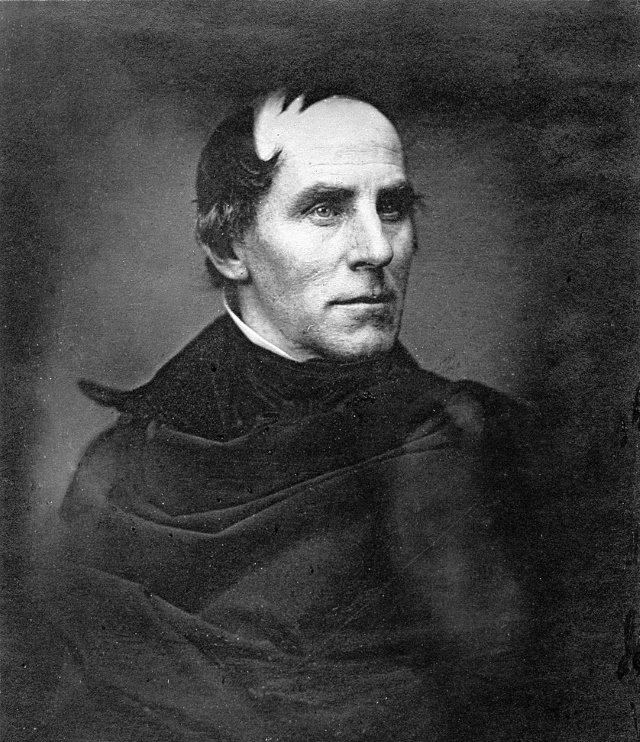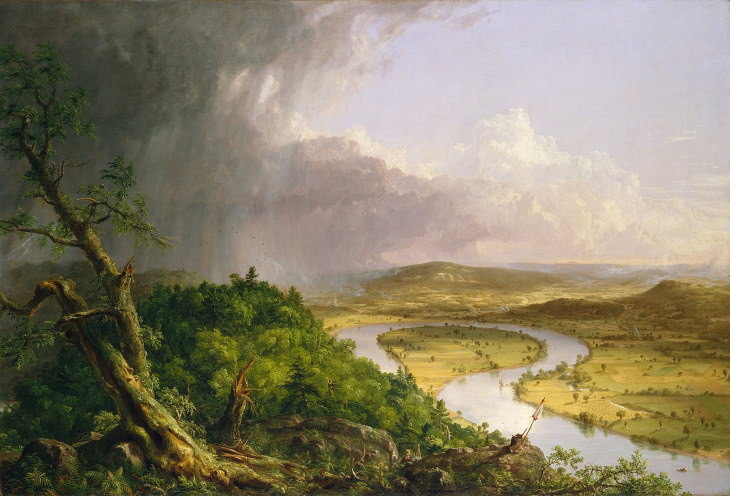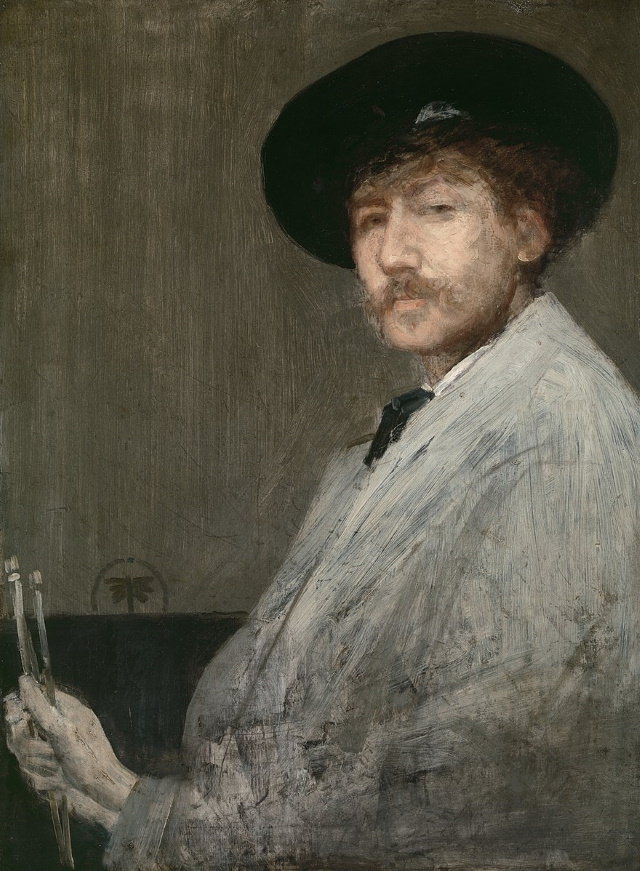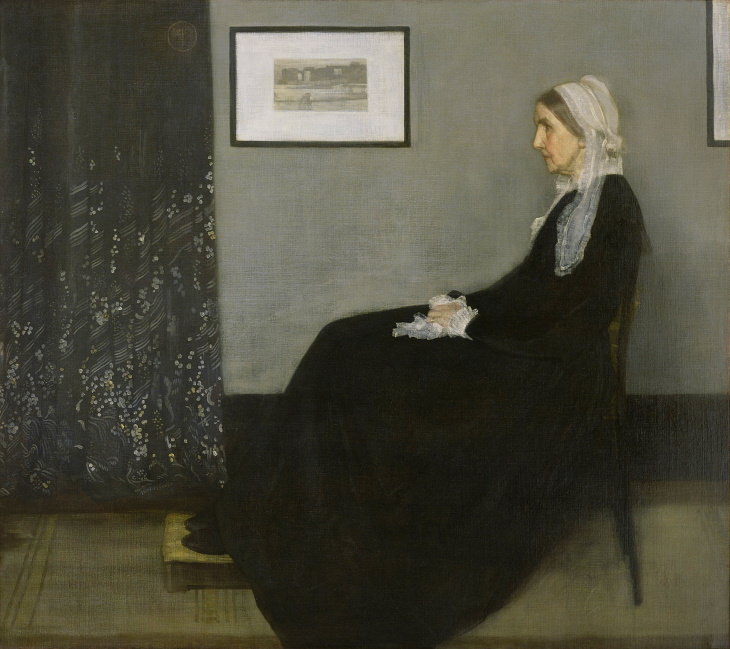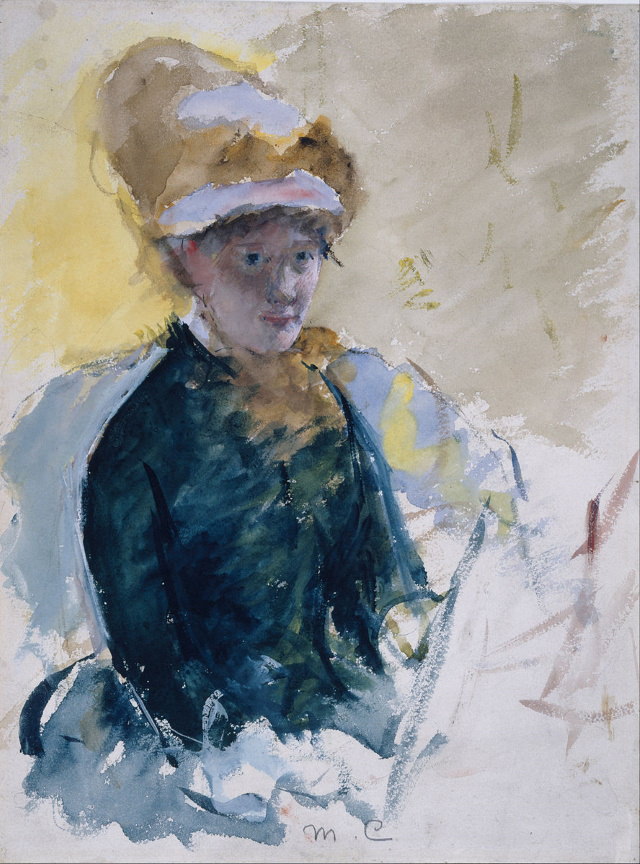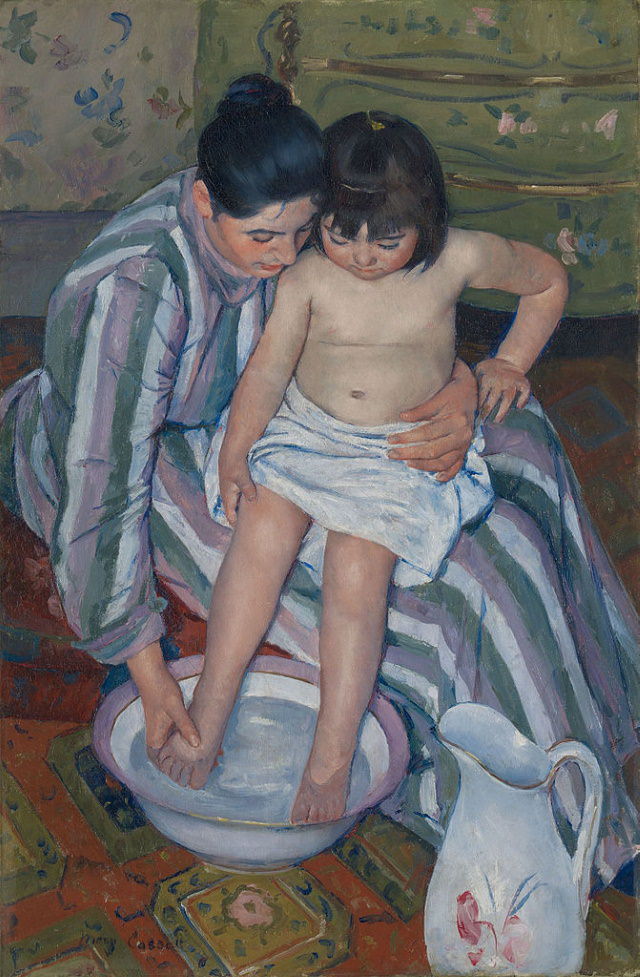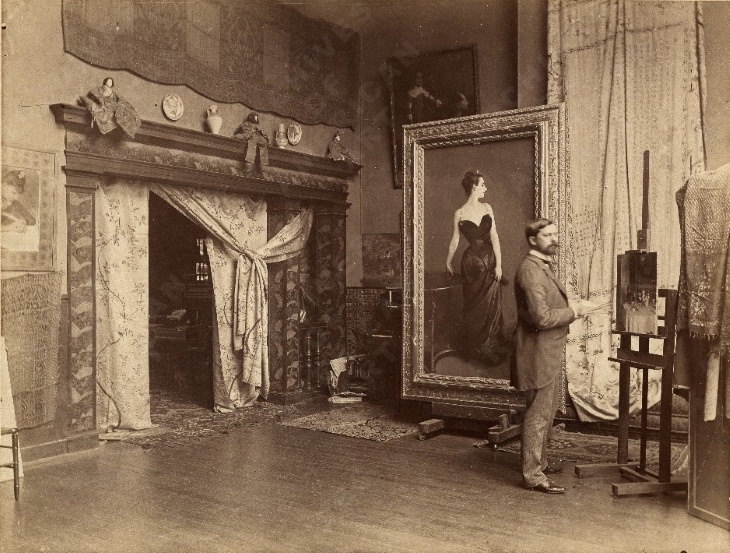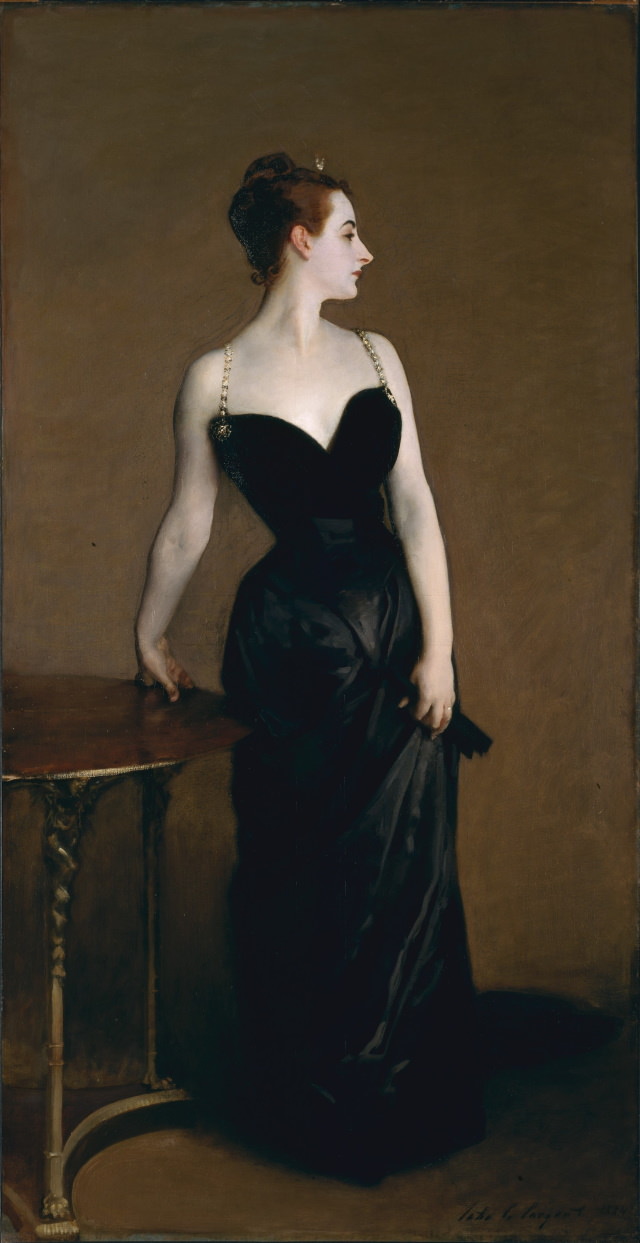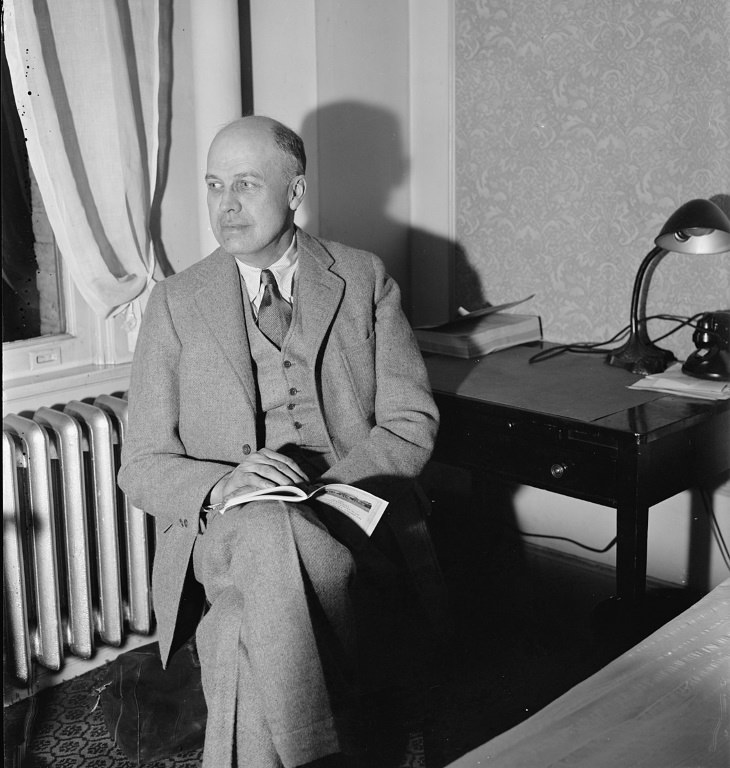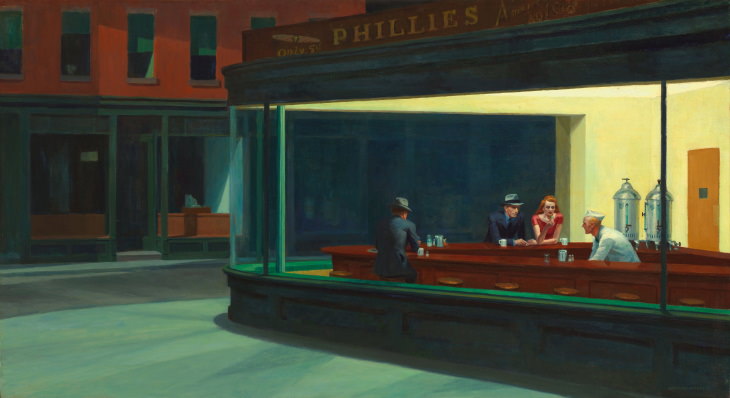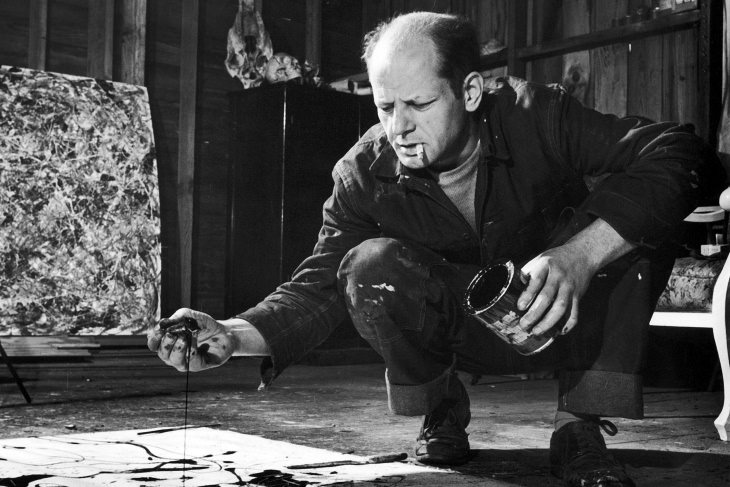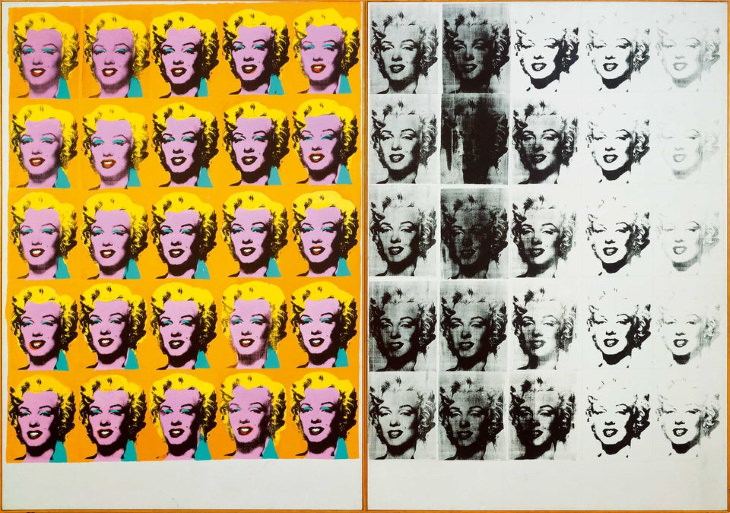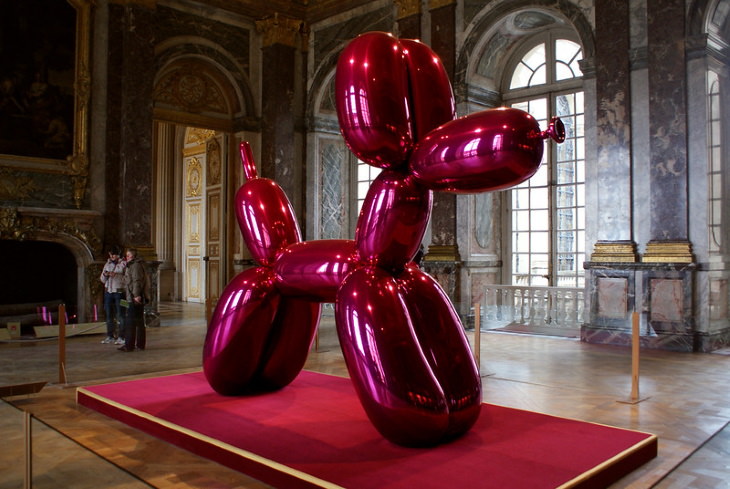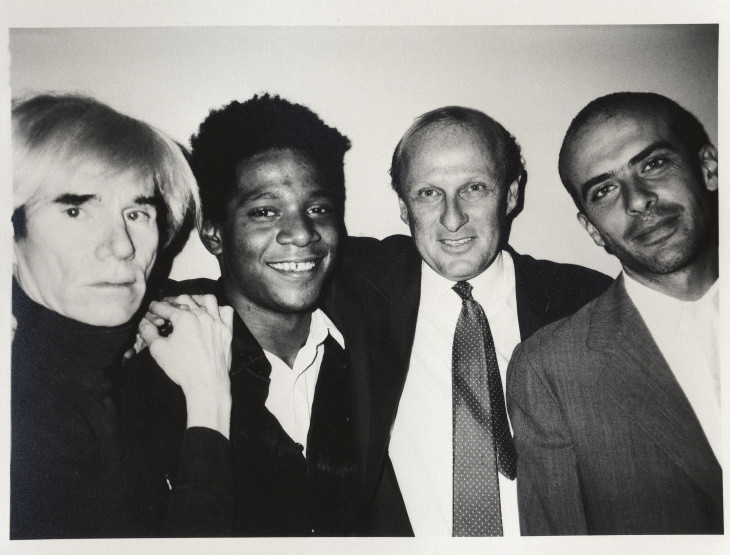1. Thomas Cole - The Oxbow (1836)
Thomas Cole (1801-1848) was a British American artist known for his skillful and realistic portrayal of the American landscape, especially the Hudson River Valley. Cole was one of the first artists to put America on the artistic map, and he is considered to be one of the most prominent landscape artists of his time.
2. James McNeill Whistler - Whistler's Mother (1871)
Self-Portrait by James McNeill Whistler (c. 1872)
James McNeill Whistler (1834-1903) lived and worked during the American Gilded Age. The artist was quite prolific in various artistic mediums and created 500 paintings and many watercolors, drawings, pastels, and etchings. Today, Whistler is remembered for giving us the famous painting often referred to as 'the Victorian Mona Lisa.' We are, of course, referring to Arrangement in Grey and Black No.1, or as it’s colloquially known - Whistler’s Mother.
The simple composition and minimal color scheme of this portrait were so revolutionary at the time that Whistler’s Mother was the first American painting to be taken to France and gain worldwide public acclaim and admiration.
3. Mary Cassatt - Child's Bath (1893)
Self-Portrait by Mary Cassatt (c. 1880)
Mary Cassatt (1844-1926) is considered to be one of the most successful Impressionist artists in the world. The famous American painter trained in Paris, the epicenter of Impressionist art, and was friends with Edgar Degas. Mary Cassatt is most well-known for her airy and soft painting style and the portrayal of everyday scenes of children and women in the role of the caretaker.
Many of Cassatt’s artworks give us a glimpse at the intimate bond of mother and child, and they’re deeply comforting and touching. One of Cassatt’s most famous works - Child's Bath (1893) - is a perfect example of her unique style. View more of Mary Cassatt's artworks here - Mary Cassatt's Impressionist Paintings.
4. John Singer Sargent - Portrait of Madame X (1884)
John Singer Sargent with Portrait of Madame X in his studio (c. 1885)
John Singer Sargent (1856-1925) was one of the greatest American Realist painters. For the majority of his career, Sargent worked in watercolor, producing more than two thousand watercolors as he was traveling around the world. However, the distinguished American artist was no stranger to oil painting either and left around 900 stunning artworks, mainly portraits, to the world.
The Portrait of Madame X depicts a woman - one Virginie Amélie Avegno Gautreau - in a long black dress with bejeweled straps. Believed to be too revealing at the time, the painting was so scandalous that it brought both the author and model a lot of woes, but also worldwide fame later.
5. Edward Hopper - Nighthawks (1942)
The first 20th-century artist on this list, Edward Hopper (1882-1967) was a native New Yorker and master of light and shadow. He is believed to be the first great modernist painter in America, and his uniquely emotional yet simple artistic style can be instantly recognized even by an untrained eye.
Hopper’s masterpiece - a painting titled Nighthawks - portrays four people at a diner late at night. We view the lonely figures from a large glass window on a deserted urban corner, which captures the paradox of loneliness in the city with eerie precision. See more of Hopper's paintings in this article: Edward Hopper An Artist That Captured the Beauty of People.
6. Georgia O'Keeffe - Jimson Weed/ White Flower No. 1 (1932)
Georgia O'Keeffe (1887-1986) needs no introduction, as she remains one of the greatest female artists of all time. O’Keeffe grew up in Wisconsin, but her career as an artist developed when she moved to New York City with her husband, photographer Alfred Stieglitz. Although O'Keeffe created various kinds of abstract art, she is most famous for her large, close-up paintings of flowers.
Her sensual and unique take on abstract art helped define American modernism as a distinct phenomenon in the world art scene. Fun fact: although flowers are her signature subject, O'Keeffe said she didn’t like them and only painted blooms because they stood still and were cheaper than models.
7. Jackson Pollock - Autumn Rhythm: Number 30 (1950)
Jackson Pollock’s (1912-1956) artworks sell for tens of millions today, and there’s a good reason for that high price tag. Even though Pollock’s famous drip paintings may be viewed as low-effort by skeptics, the artist’s signature style was a groundbreaking new way to express ultimate artistic freedom, abandoning any control over the artistic process.
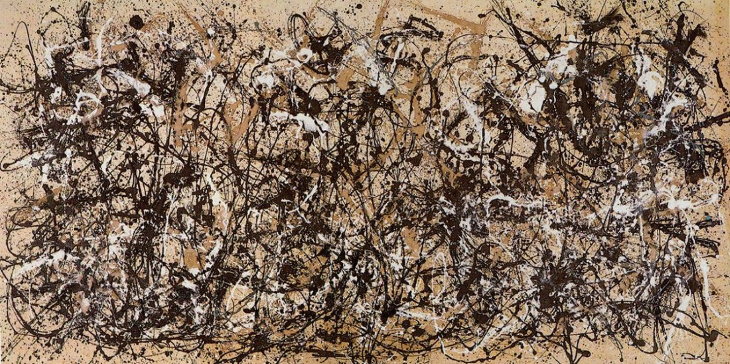
Pollock started producing his first drip paintings in the late 40s and completed hundreds of them, but the Autumn Rhythm paintings done in 1947-1952 are often considered one of his best and most valuable.
8. Andy Warhol - Marilyn Diptych (1962)
The American artists of the 1960s expanded our definition of fine art, and Andy Warhol (1928-1987) was definitely one of the key figures responsible for that profound paradigm shift we call the Pop Art movement. Warhol took imagery from pop culture and transformed them into fine art.
Campbell’s soup cans turned into full-fledged models, and photos of famous celebrities, famously Marilyn Monroe, were distorted, multiplied, and painted into vivid colors to represent society’s obsession with mass production.
9. Jeff Koons - Balloon Dogs
Born in 1955, Jeff Koons is, sadly, the only living American artist on this list. The distinguished contemporary artist continued the ideas put in place by pop artists of the 1960s and developed them to challenge the world’s view of consumer culture. Like Pollock, Jeff Koons is continuously breaking all records at art auctions, with his pop culture-inspired sculptures of bunnies and balloon dogs selling for tens of millions of dollars.
Jeff Koons is most famous for his balloon dog sculptures made of stainless steel, which he started making in the late 1990s and early 2000s. There are yellow, blue, red, and magenta versions of the sculpture, but the most well-known Balloon Dog is orange, and it was famously sold for USD 58.4 million in 2013 at a Christie's auction.
10. Jean-Michel Basquiat - Untitled (1982)
Jean-Michel Basquiat (1960-1988) was a New York-based artist who revolutionized the art world in the 1980s. The young artist was one of the most prominent artists of the Neo-expressionism movement. At 22, Basquiat was the youngest artist to exhibit at the Whitney Biennial in New York, and his immensely expressive works continue to resonate with us today.
Basquiat was one of the first artists to incorporate graffiti into fine art - an immensely important stepping stone in the development of contemporary art.
Share this article with those who will find it interesting

